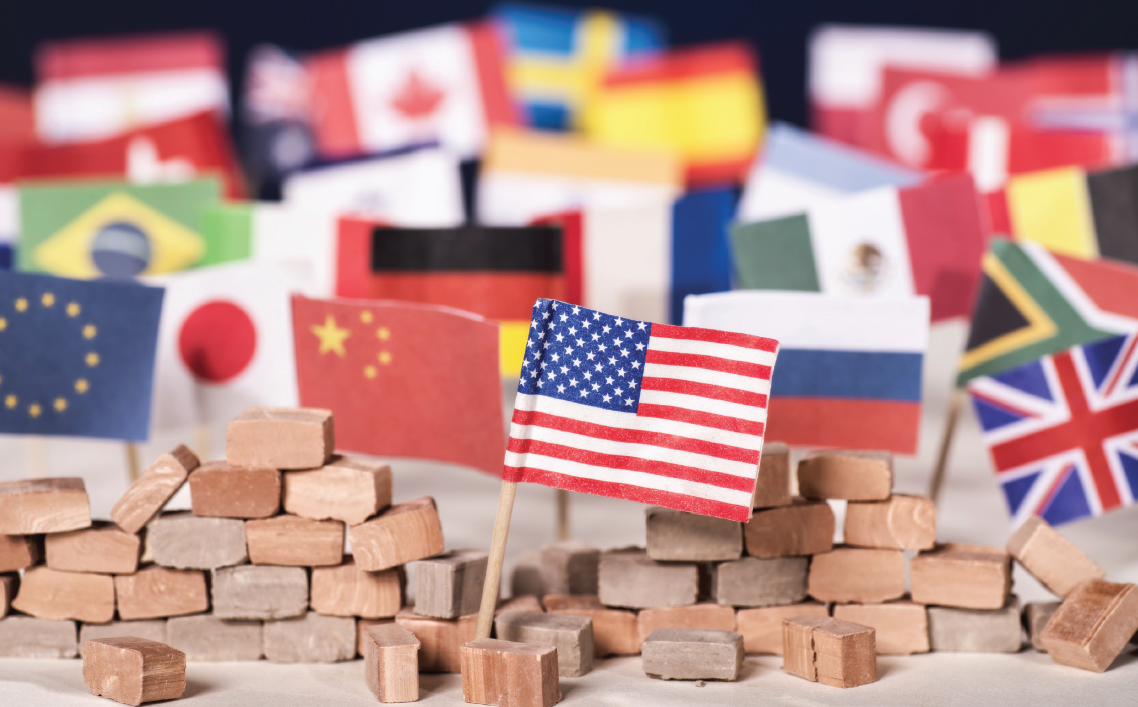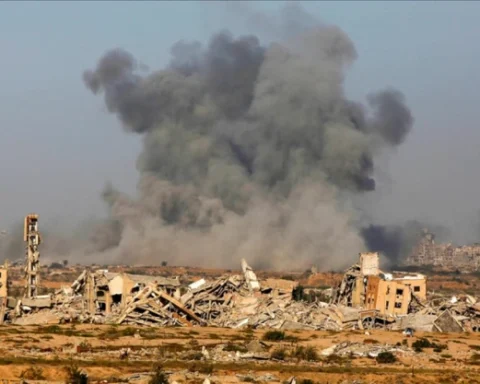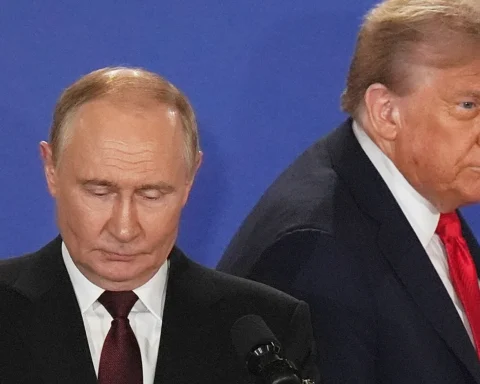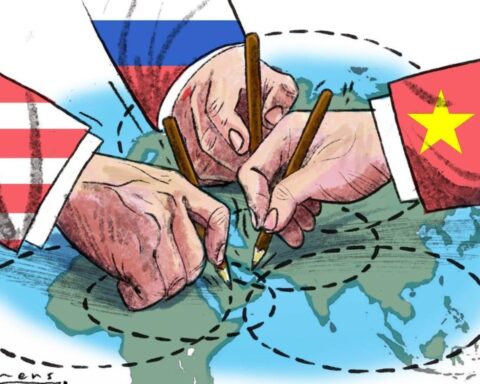Donald Trump anointed himself, in his second inaugural, as the world’s “peacemaker.” Just three months later, his presidency is consumed by conflict. The coming months will be Trump’s season of crisis, a legacy-making period in which he must navigate three hot wars, a cold war, a potential war and a trade war.
Unfortunately, he’s starting from a deficit of his own making: His decisions have left America’s alliances strained, its economic power tattered, and its strategic competence in question.
The first war is the one Trump has always seemed most confident about ending: the cataclysmic conflict in Ukraine. Trump wagered that making peace would be easy — a matter of menacing Russia with sanctions and forcing Ukraine to give up on regaining lost lands. Yet Russian leader Vladimir Putin’s maximalist aims, and his belief that he is slowly winning, have made reaching a settlement all too hard.
Trump must choose, in the coming weeks, whether to really squeeze Russia — through harsher oil sanctions and other economic coercion, along with continued military and intelligence support for Ukraine — or walk away and let the war take its course. The first course would be distasteful for a president who often shows sympathy for Moscow and contempt for Kyiv. The second, by raising the risk of a Ukrainian defeat, could be disastrous for the security of Europe and the future of the North Atlantic Treaty Organization.
The second war is in the Middle East, where the US has been pounding — but not yet deterring — the Houthis in Yemen. It is raging alongside a third war, as Israel again takes the offensive in hopes of finally defeating Hamas.
Yet those campaigns might simply be prelude to a larger potential war with Iran over its nuclear program. Trump seems torn between a minimalist approach of simply keeping Iran short of a nuclear weapon, which Tehran might accept, and a more ambitious set of demands — tearing Iran’s nuclear program down to the studs — that the Iranians might well reject, even at risk of conflict.
The clock is ticking. If there’s no agreement by mid-summer, Trump will have to decide whether to green-light a military strike by Israel, the US, or both countries acting in unison. He will also have to resolve the tension between two longstanding priorities: avoiding a nuclear Iran and avoiding new Middle Eastern wars.
Then there is the new cold war, with China. As the president’s second term started, Beijing was abuzz with hopes for Trump’s long-promised “grand bargain.” But now hostilities have hardened: Amid surging trade tensions, China is declaring that it will fight to the end.
Meanwhile, the peril for Taiwan grows as Beijing cinches its military noose tighter. Trump’s choice, in US-China relations, is between showing weakness by backing down in the commercial dispute — or settling in for a more intense, comprehensive confrontation, with all the investments and dangers that entails.
Finally, don’t forget the larger trade war. After beginning April with a wild week of all-azimuths commercial antagonism, Trump delayed the highest and most destructive tariffs against nearly everyone but China. Yet that move may only have been a 90-day stay of execution for the global economy. The weeks ahead will determine whether Trump can negotiate the trade deals that would bring a more lasting de-escalation — or perhaps even find a way, as Treasury Secretary Scott Bessent has suggested, of lining up friendly countries for an economic contest with Beijing.
The stakes of all this are terribly high. They involve the peace and stability of key regions across Eurasia, as well as the health of the world economy and the cohesion of the democratic community. This would be a daunting panorama for any administration. But Trump enters his time of testing with two self-inflicted liabilities.
First, he has squandered key elements of American strength. Ideally, the US would enter a fraught moment with a roaring economy and solid alliances. But Trump has tanked the stock market, sent capital fleeing and pushed America toward an utterly avoidable recession.
NATO, meanwhile, is in a fix as the allies confront a patron that seems indifferent, if not hostile, to Europe. US friends everywhere are presumably astonished by how radical and reckless Trump’s America has become. Maybe beating down the Houthis will instill some fear in US enemies. But for all Trump’s talk about an American “golden age,” many countries see a superpower in decline.
Second, crisis management challenges even the competent, and Trump’s team seems anything but. The Pentagon is in turmoil that would be unacceptable to any other president. The chaotic rollout, and rollback, of Trump’s tariffs reveal a president playing fast and loose with the economic fate of countries everywhere. The National Security Council, when it isn’t sharing sensitive information via Signal, hardly seems to function at all.
This disorder may not bother Trump, who says that he makes all the decisions himself. But now he has entered a period that will define his presidency and shape the fate of the international system. America, and the world, will pay a high price if he doesn’t get his act together fast.
Source: https://www.aei.org/op-eds/trump-is-facing-six-wars-and-hes-losing-all-of-them/






